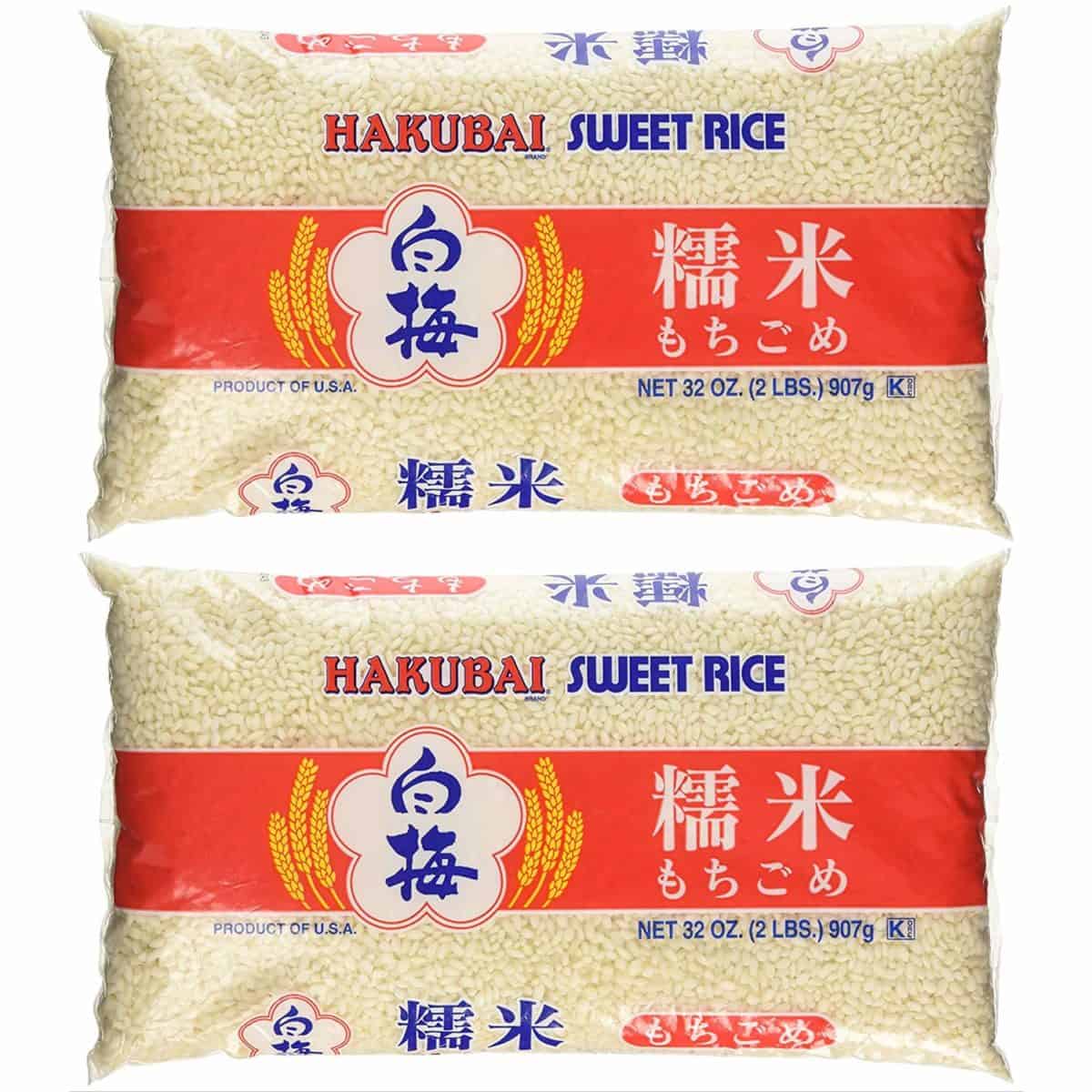Mochigome: The Sticky Sweet Rice Japan Uses For Desserts
Mochigome is a type of rice (kome) that is native to Japan. It is short and round, and has a sticky texture. It’s also sometimes called sweet rice or oryza sativa glutinosa.
Mochigome is often used in Japanese cuisine, for dishes such as mochi (rice cakes) and sekihan (red bean rice).


Check out our new cookbook
Bitemybun's family recipes with complete meal planner and recipe guide.
Try it out for free with Kindle Unlimited:
Read for freeIn this post we'll cover:
What does “mochigome” mean?
The word “mochigome” is made up of two Japanese characters: “mochi”, which means “glutinous rice cake”, and “gome”, which means cooked rice. So, mochigome means “rice suitable to make glutinous rice cakes.”
What does mochigome taste like?
Mochigome has a sweet, chewy texture. It is often used in desserts or sweet snacks, such as ohagi (great recipe here).
A mochigome I always use is this Hakubai Japanese sweet rice because of its texture and the hint of sweetness:

How do you cook mochigome?
Mochigome can be cooked in the same way as regular rice. However, it is important to rinse the rice before cooking, to remove any excess starch. Mochigome is also often steamed, rather than boiled.
What are some popular mochigome dishes?
- Mochi is a popular Japanese dish made from mochigome. It is a rice cake that is typically filled with sweet bean paste or other fillings.
- Sekihan is another popular dish made from mochigome. It is a rice dish that is cooked with red beans, and often served at celebrations or special occasions.
- Daifuku is a popular Japanese sweet that is made from mochigome. It is a rice cake that is filled with sweet bean paste or other fillings.
- Zenzai is a popular Japanese dessert that is made from mochigome. It is a sweet soup that is typically made with red bean paste, sugar, and water.
Dango is also a popular Japanese snack that is made from mochigome, but it’s made from rice flour (mochiko) instead of the rice being pounded. It is a rice flour dumpling that is often served with sweet soy sauce.
What’s the origin of mochigome?
Mochigome is native to Japan, and has been cultivated there for centuries. It is believed to have first been grown in the southern part of the country.
How is mochigome different from other types of rice?
Mochigome is a type of glutinous rice, which means it is sticky and chewy. It is also short and round, which makes it different from other types of rice. Mochigome is used where dishes call for extra stickiness.
What’s the difference between mochigome and mochiko?
Mochigome is the rice that is used to make mochi, while mochiko is a type of rice flour made from mochigome, just like other rice flours are made from different types of rice.
Is mochigome healthy?
Yes, mochigome is a healthy food. It is a good source of complex carbohydrates and fiber. Mochigome is also low in fat and sodium, and is cholesterol-free.
Conclusion
Mochigome is a type of rice that’s excellent for those dishes where extra stickiness and a hint of sweetness are called for.
Check out our new cookbook
Bitemybun's family recipes with complete meal planner and recipe guide.
Try it out for free with Kindle Unlimited:
Read for freeJoost Nusselder, the founder of Bite My Bun is a content marketer, dad and loves trying out new food with Japanese food at the heart of his passion, and together with his team he's been creating in-depth blog articles since 2016 to help loyal readers with recipes and cooking tips.

